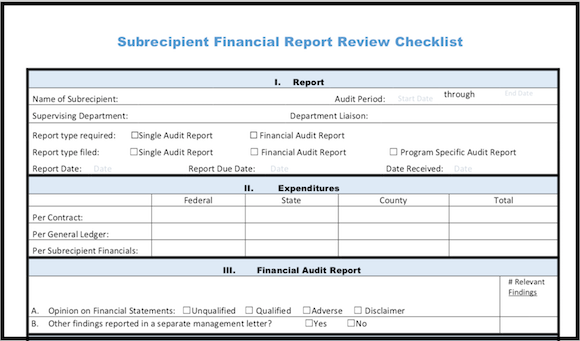|
Just like a business will suffer losses when its customers are not happy, so will government officials feel a bigger burden when citizens’ needs are not being met. With smartphone apps available at their fingertips, people today are used to receiving quick, favorable and customized service. And customers today have more power in their hands than ever; if they are unsatisfied with the level of service they receive, they will let their frustrations be known – via multiple channels: in person, with phone calls, on social media platforms, through review sites or by submitting petitions.
They bottom line is: whether you're a business or a local government, the level of customer service you provide will shape your path forward. But just how can local governments make sure their citizens are happy? One key is to ensure that the city’s public and community services are running smoothly. A city’s Public Works Department is one key department that has control over how customer-facing functions are executed. And to achieve that it takes having the right people with the right attitudes on board.
Let’s take a look at one fictional city’s internal department practices…
John Contreras is relatively new as the Public Works Director of the City of San Cajoles. He has just looked at his department’s monthly report and can’t understand why employee benefits are so high. He received the monthly report from the IS Department and, thinking that IS can tell him how the report calculates benefits, he walks over to the IS Director’s office.
Bob Fosse, the IS Director, is in his office. He has had one of those typical days of fighting fires and fielding complaints from users who each think they should be his top priority. Bob is not happy to see John at his office door. When John explains he wants to understand how the benefits rates are calculated, Bob is relieved. That is something that the Finance Department can answer! He quickly refers John to Finance. When John arrives in the Finance Department, the Finance Director is not there. John leaves a message with the department secretary asking the Finance Director to explain how his employee benefits are calculated. The next day, John gets a voicemail from the Finance Department secretary stating that the Finance Director asked her to let John know that employee benefits are handled by the payroll unit, which is part of the Human Resources Department. John walks down the hall to see the Human Resources Director, Jean Rossi. Jean listens intently to John’s question and responds that while she personally is not an expert on the employee benefit calculations, he has come to the right place. Jean calls in her payroll supervisor and introduces Sally Yoshino to John. John and Sally go to Sally’s desk where John explains what he is looking for. Sally responds that the employee benefits rates she is using this year were established by the budget unit at the beginning of the year. Sally can provide the percentage used to calculate the amount of employee benefits charged to the Community Development Department, but cannot explain what the components of the rate are. John heads over to meet the Budget Manager, Charles Goodlow. Charles has been with the City for over 30 years and he has the reputation of getting by with as little effort as possible. When John explains that he is trying to understand the amount of employee benefits charged to his department, Charles states that the budget for employee benefits was established 4% higher than the prior year. John pushes for a list of the components of the rate, but is not surprised when Charles insists that amount of detail does not exist. John slowly heads back to his office wondering how the City has reached such a point that no one can answer a simple question, and that they don’t even seem to want to try. He also wonders how he can effectively manage the Community Development Department without the support of the internal administrative functions of the City. No one follows up with John over the next few days to make sure that he received an adequate response to his question. The next time he has a human resources question, he does not call the Human Resources Department. The next time his department has an accounting issue, he tells his staff to figure it out themselves and keep its own separate accounting records if necessary. The next time there is a question about IS, he call his brother-in-law at MicroDevices.com instead of the City’s IS Department. The Problem
Unfortunately, John Contreras’ experience at the fictional City of San Cajoles is not uncommon. The mission statements of many city administrative services departments (Finance, Human Resources, Information Services, Clerk, Attorney) includes the commitment to provide excellent service to customer departments (Police, Fire, Public Works, Community Development, Economic Development). However, too often those mission statements are not understood and applied by their people. In the example above, the City of San Cajoles’ has several problems that keep it from providing exceptional customer service. Perhaps the biggest of these problems is that the administrative services people have not been adequately trained in providing customer service to the customer departments. If they had, they wouldn’t look upon John Contreras’ questions as a distraction, but rather as one of the best opportunities to directly perform their main task – to assist their customer.
The Solution
In order to provide a high-level of customer service, attitudes and behaviors must be molded in the administrative services departments.
Here are four steps that should be incorporated by management to improve the level of customer service:
By implementing these simple steps, governments can quickly raise their level of customer service and enjoy the results in better cross-departmental communication, as well as in increased satisfaction amongst their citizens.
If you’re interested in a personalized consultation how your department’s level of service could be improved, please don't hesitate to reach out to Kevin directly:
Kevin Harper, CPA [email protected] (510) 593-503
For continued tips on improving your internal processes and communication, please join our mailing list here! (We will never spam you – promise!).
Comments
|
The Government Finance and Accounting BlogYour source for government finance insights, resources, and tools.
SEARCH BLOG:
Meet the AuthorKevin W. Harper is a certified public accountant in California. He has decades of audit and consulting experience, entirely in service to local governments. He is committed to helping government entities improve their internal operations and controls. List of free Tools & Resources
Click here to see our full list of resources (templates, checklists, Excel tools & more) – free for your agency to use. Blog Categories
All
Need a Consultation?Stay in Touch! |






 RSS Feed
RSS Feed